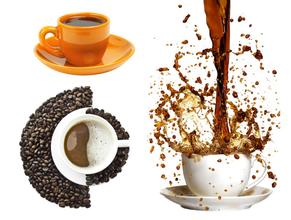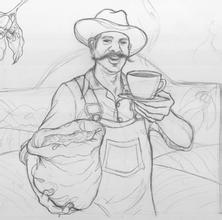Starbucks US Market encounters bottleneck transition Food Retail Breakthrough
Starbucks, which recently bought La Boulange, a French bakery chain owned by Bay Bread, recently announced that its first teahouse, Tazo, will open in October. Both bakeries and teahouses demonstrate the intention of this coffee chain to diversify.
"at present, the Chinese market has become Starbucks' largest market outside the United States, and now it is mainly making a breakthrough in store expansion, and store diversification will also infiltrate, but as far as teahouses are concerned, there are no plans yet." Wang Xingrong, head of Starbucks' China Public Affairs Department, said in an interview with the Investor News.
The industry believes that Starbucks' moves are mainly due to its saturation in the US market and the need to constantly launch new products and brands to gain new profit growth.
Starbucks' u.s. business fell sharply between 2008 and 2009, with full-year profits falling by 69% in the first quarter of 2009 due to the downturn in the u.s. market, according to public data. In 2010, Starbucks' turnover rebounded 13.8% to its highest level in 40 years after slowing growth, but this year, the u.s. coffee market grew by only 8%, and overall coffee consumption is slowing.
From bakeries to teahouses
On June 4, Starbucks announced that it had reached an agreement with San Francisco-based baker Bay Bread to buy its French bakery chain La Boulange, which sells oats, steak sandwiches and organic bread for $100m.
The diversified tentacles extend to the bread field, which can be said to be a foreseeable part of its expansion.
"in fact, you can see that we have not just made such a move in the past few days. As early as 2011, we changed the label and removed the outer circle of" Starbucks Coffee ", which already shows that we are beginning to develop towards a multi-brand strategy." Wang Xingrong told the Investor News.
Evolution Fresh Juice became Starbucks' first experimental brand. After a $30 million acquisition in November 2011, Starbucks redefined the brand and turned it into a more vibrant mid-to-high-end healthy juice brand. This time, La Boulange products will eventually be incorporated into Starbucks' consumer goods system, not only sold in Starbucks stores, but also on supermarket shelves.
If we only tried to launch the above products in stores before, the opening of teahouses now means that Starbucks multi-brand strategy should begin to operate independently with a new brand.
Xiang Jianjun, a CIC consultant food industry researcher, said in an interview with the Investor that this series of moves marks the transformation of Starbucks from a coffee monopoly to food retail. Starbucks hopes to make diversified food supply an important part of its core business, so that the company can maintain sustained growth in all channels.
Wang Xingrong believes that the term "transformation" is incorrect. She has always stressed that "the expansion of Starbucks multi-brand is only the development of opportunity consumers", while coffee is still the core of Starbucks.
Bet on challenges in the Chinese market
The strategic expansion of diversification and multi-brands is on the one hand, and extending to the international market is also an important strategy of Starbucks, and China is undoubtedly the top priority. Wang Xingrong said that the Chinese market has become Starbucks' largest market after the United States.
At the opening ceremony of Starbucks' 500th store in mainland China in October 2011, Starbucks said it would accelerate its expansion in mainland China and open 1500 stores in mainland China by 2015. This means that Starbucks opens an average of more than 200 stores in mainland China each year.
Starbucks is accelerating its store opening not only because it is bullish on the Chinese market, but also because of tremendous pressure from competitors.
At the beginning of this year, Qiu Zibao, operations director of British coffee chain COSTA in China, also said publicly that the company would open 250 new stores in mainland China in the next three years. In addition to COSTA, which locates the high-end coffee market, McDonald's McCoffee, which is relatively cheap and good quality, has also become a strong competitor to Starbucks in recent years.

Important Notice :
前街咖啡 FrontStreet Coffee has moved to new addredd:
FrontStreet Coffee Address: 315,Donghua East Road,GuangZhou
Tel:020 38364473
- Prev

Per capita coffee consumption in the United Arab Emirates has tripled
According to the latest statistics released by the International Coffee Organization, tea and coffee consumption in Arab countries has more than tripled in the past decade. Consumption in the United Arab Emirates has increased by 85% in the past three years. The per capita annual consumption of tea and coffee in the United Arab Emirates is 3.5 kg, which is about double that of other Gulf countries, and tea consumption has increased by 47%. 2011 Global Coffee
- Next

Congo Coffee, the largest coffee exporter of PNG, gets a loan of 10 million.
The IFC, a member of the World Bank Group, will work with PNG South Pacific Bank to set up a risk-taking mechanism to ensure that South Pacific Bank will provide a loan of 10 million Gina to Congo Coffee, the largest coffee exporter in PNG. The National newspaper of Papua New Guinea reported on July 2 that the International Finance Corporation, a member of the World Bank Group, will work with the Singapore South Pacific Bank to establish the wind.
Related
- Why can American refills for free? The difference between Americano and American drip pot coffee
- Being chased out of the rain in front of Starbucks?! Store: Sheltering from rain under umbrellas poses a safety hazard
- The white moonlight has changed?! Lucky launches "Big Winter Pear American"
- Hand-brewed coffee three-stage method, high-sweet and universal brewing method to share! What does the high sweet water level of hand-brewed coffee mean?
- What is the difference between raw, refined and full espresso coffee? How to extract espresso and taste good?
- A complete list of coffee bean names and their meanings! What is Yejia Shefi coffee? Where is Mantelin coffee?
- What grade does Arida Manor Kaduai coffee beans belong to? What treatment is Arida ASD slow anaerobic sun exposure?
- The milk tea cup becomes smaller?! Overlord Tea Girl launches a new "Return to Yunnan" series
- Accused of selling counterfeit and high-priced coffee beans! Well-known boutique coffee brand "Oukelao" bowed and apologized!
- How to make espresso dumplings? Can I eat coffee and glutinous rice balls together?

